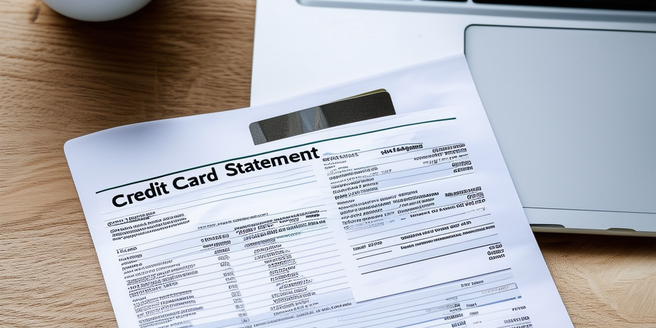
Understanding the Basics of a Secured Credit Card Statement
A secured credit card is a type of card that requires a security deposit. This deposit acts as collateral, guaranteeing the lender that you’ll repay the money you owe. It’s important to note that if you ever default on your payments, the lender can use this deposit to recover their losses. The deposit amount is usually equal to your credit limit, providing a safety net for the lender. By understanding the basic elements of your secured credit card statement, you can better manage your spending habits and maintain good credit health. The statement will display your credit limit, balance, minimum payment, and payment due date. Be sure to regularly review your statement for any suspicious activity.
The Anatomy of Your Secured Credit Card Statement
Your secured credit card statement is divided into several key sections, each containing specific information about your account activity. These sections provide a comprehensive summary of your financial activities. The account summary section, a crucial part of your statement, offers a snapshot of your balance at the start and end of your billing cycle. The transaction details highlight all your purchases, cash advances, and payments, itemizing every penny spent and received. The payment information section outlines the minimum repayment amount and deadline, thereby averting late fees and maintaining your credit score. Overall, these sections help understand your spending, manage transactions, and keep up with payment commitments, contributing to a secure financial future.
Deciphering Purchases, Payments, and Penalties on Your Statement
Understanding how your purchases, payments, and potential penalties are displayed on your secured credit card statement is vital. Every purchase you make is detailed on your statement, including what was bought, the date of the purchase, its location, and the specific amount spent for complete transparency.
The record of payments made to cover the card balance is another crucial element on your statement. These payments are outlined clearly, including the date and the figure that was paid. This allows for a clear overview of your payment history, helping with budgeting and financial management.
Late payment penalties, if applicable, will also be explicitly stated on your statement, serving as a reminder to pay your dues on time. Any late fee charges are clearly noted for your awareness of additional costs.
It is crucial to carefully recheck these entries for any potential discrepancies or errors. Always review your credit card statements meticulously to ensure every transaction, payment, and penalty is correct to avoid unexpected charges and manage your credit score effectively.
How Interest and Fees Are Applied in Secured Card Statements
Interest charged on secured credit cards relies on both the Annual Percentage Rate (APR) and your outstanding balance. The more you owe, the higher the interest payments, given a constant APR. This is central to the operation of secured cards and important when deciding how much money to put on the card. Monthly card statements reflect the accumulated interest for that billing period.
Interest contributes to your balance and is impacted by your APR and outstanding balance. Your balance includes both your spending and accumulated interest, hence understanding how interest is calculated for your card is crucial to avoid unnecessary charges.
Fees related to secured cards, like annual fees, late payment penalties, and cash advance fees, can vary. These can impact your overall balance and potentially increase the interest you pay, as the interest is tied to your outstanding balance. Consequently, pay close attention to your secured card’s fee structure.
The specifics of how these fees are applied should be detailed in your cardholder agreement. This agreement, a contract between you and your card issuer, will explain the interest rates, annual fees, and any other potential fees. Understanding this contract is essential for managing your secured card responsibly.
Effective Ways to Manage Your Secured Credit Card Statement
Secured card management, integral to financial health, involves making timely payments, not carrying a balance month-to-month, and understanding the fees associated with your credit card. Regular review of your statement not only helps to monitor spending but also identifies potential errors or signs of fraudulent activity. Endeavor to pay the full balance each month to avoid accrued interest, which can amount to a significant sum rapidly. Avoiding high-interest charges, on-time payments prevent late fees and positively affect your credit score. Familiarity with all possible fees helps avoid unexpected charges. Thus, comprehensive card statement management, smart spending, and punctual payment habits not only enhance your financial literacy but furnish responsibility and control over your economic situations, benefitting your financial stability and health.
